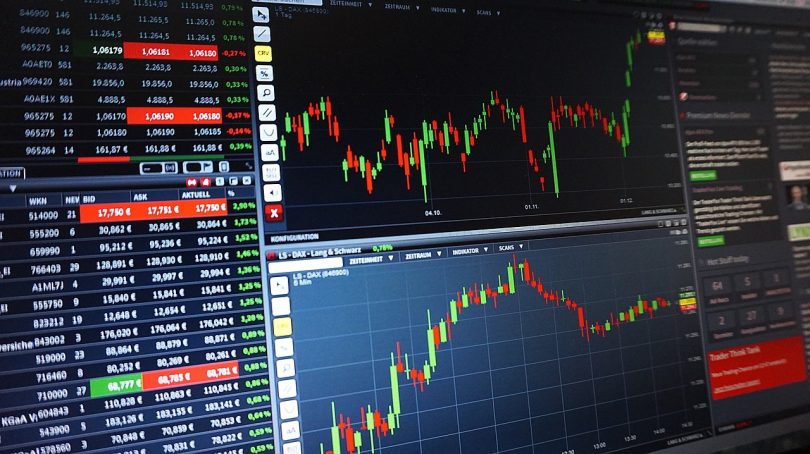Foreign exchange rates are some of the most perplexing you ever come across. The concept is pretty straightforward – the higher the demand and the lower the supply is for one currency, the higher the rate is going to be in relation to other currencies. With that being said, the fx world is such high-paced and diverse that it is impossible to grasp it fully without being an expert in the field.
One question that everyone seems to be asking nowadays is…
Why don’t currency markets always react as expected?
Currency markets are influenced by a variety of factors during every day. Investors and pundits are also constantly looking to assess and predict the impact of events on market prices.
From a short-term view, this jockeying is a crucial factor affecting prices, especially with computerised trading strategies looking to gain millisecond advantages to trade news and make profits.
Markets and investors also have strong expectations over the likely impact of events, but these expectations are not always reflected in reality.
Short term against long term
To an important extent this short-term noise is inevitable given the way markets work as total predictability would quickly be exploited by short-term traders.
This feature of seemingly perverse moves tends to be a short-term factor and the longer-term implications will tend to be in line with expectations. High yields and strong fundamentals will support a currency while weak fundamentals and low yields will undermine currencies.
Market positioning a crucial factor
A key aspect of trading events is market positioning and this applies to both expected and rumoured events. The extent to which markets are long (bought) or short (sold) currencies into an event will have an important impact on price action after the event.
Professional traders also watch positioning very closely and will look to take advantage of extreme positioning, especially as there will be stop losses in place.
For example, if there has been heavy selling pressure on GBP/USD with a move to just below a key technical level, some traders will look to take advantage and push GBP/USD higher in an attempt to trigger stops just above the technical level.
A very important feature in all asset classes and especially in currency markets is ‘buy the rumour, sell the fact’ (110,000 repeatetitions on Google.co.uk) This cliché is often over used in an attempt to explain unexpected currency moves, although it certainly has a valid impact.
“Buy the rumour sell the fact” explained
This is a particularly important feature for events such as interest rate announcements which are scheduled or known that they are happening in advance.
The conventional analysis is that higher interest rates will tend to support a currency. If, therefore there are expectations that interest rates will be increased by the Bank of England, short-term traders and investors will be looking to buy Sterling ahead of the decision. As Sterling moves higher, the upward move will also tend to draw additional speculators into the market to buy the currency.
This is known as buying the rumour.
If the Bank of England does decide to increase interest rates, these short-term traders will look to take profits on the move and will sell Sterling. If there had been very strong buying ahead of the event, the overall trend of profit taking could easily be enough to push Sterling weaker and potentially to below pre-event levels.
This is known as selling the fact
This effect can also be seen, for example, in events such as rumours of central bank Governors or Prime Ministers resigning.
As such rumours gather traction in the market, there is a higher risk that currencies will come under sustained selling pressure. In these circumstances, there is the potential that the actual resignation will trigger a relief rally in the currency as short-term traders take profits on the move.
Currencies over-sold or over-bought
A related feature is when a currency has been subjected to sustained selling on bad news or very strong gains on a run of good news. In these circumstances, a currency may have been pushed to extreme valuation levels.
At some point traders will enter the market on the other side. Valuations will be seen as attractive from a longer-term point of view and there will also be a deliberate attempt to force other positions to be closed and an aggressive currency reversal can be seen.
In this context, another piece of ‘bad’ or ‘good’ news could lead to an unexpected reaction.
Statement offsets event headline
A second key factor is that the details of a piece of fundamental information do not match the headline action. This is particularly important at turning points in an economic cycle.
For example, as well as the rate decision, a central bank usually issues a statement describing the reasons for the decision and commenting on the outlook.
A bank may raise interest rates, but also signal that further interest rate increases are unlikely.
In these circumstances, the markets will take much greater notice of the commentary that rates are unlikely to be increased further rather than the actual decision to raise interest rates.
In this environment, the currency can weaken sharply despite higher interest rates.
Similarly, a currency can rally strongly even if interest rates are cut if the central bank signals that further rate cuts are unlikely.
Mind the detail in economic data releases
There can be a similar effect from economic data releases if the detail within the release is substantially different from the headline release.
The US employment report is the most important monthly release on the global economic calendar. The immediate market reaction is usually triggered by the headline change in non-farm payrolls. If, however, there is a weaker than expected headline figure for non-farm payrolls which is offset by a substantially stronger than expected figure for average earnings and unemployment, the dollar is liable to strengthen.
Safe-haven demand distorts prices
Reactions to global geo-political events such as terrorism incidents can also trigger reactions which are contrary to expected logic. This is particularly important in the case of Japan which runs a substantial current account surplus and is the ultimate safe-haven asset.
In the event of any major global disaster or terrorism incident, there will be a flow of funds into safe assets and this will certainly include the yen. Where the incident is outside Japan, the market impact will seem logical, but the effect is also the same when the incident directly affects Japan.
For example, any North Korean military threat against Japan will tend to strengthen the yen despite expectations that it would weaken the Japanese currency.
The yen also strengthened sharply after the huge earthquake and Tsunami seen in 2010 despite huge damage to the domestic economy.









